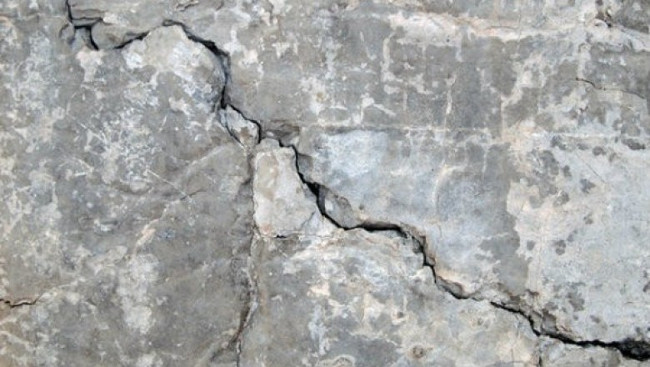Concrete uses fungi to fill cracks
Inspired by the self-healing ability of humans, Congrui Jin, Guangwen Zhou and David Davies from Binghamton University in New York, together with Ning Zhang from Rutgers University, have been studying to create a co-planed concrete. Trichoderma reesei, along with nutrients, is placed in a concrete mixture to create the ability to self-fill if there are cracks.
When the concrete has hardened, the spores remain inactive until the first small cracks appear. When concrete cracks, water and oxygen will enter the structure. This causes the spores to germinate, grow and precipitate calcium carbonate (CaCO3), thereby causing cracks to quickly fill over time.

Assistant Professor Jin said: " When the cracks are completely filled, there is no more water and oxygen inside. At this time, the fungus continues to form a spore. When meeting the conditions convenient as concrete appears cracks, fungal spores in concrete are quickly awakened '.
The research is still in its early stages and in the meantime, scientists from Newcastle University and Bath University have developed self-healing concrete combining calcium carbonate-producing bacteria.
This study was published in Construction and Building Materials.
See more:
- Why is Roman concrete 2,000 years ago more sustainable than modern concrete?
- Few doubts of concrete can help limit air pollution
- Concrete bubbles promise to help restore coral reefs faster
You should read it
- Few doubts of concrete can help limit air pollution
- How to use concrete drilling machine correctly, for nice borehole
- Top 5 concrete drills for civilians
- Why is Roman concrete 2,000 years ago more sustainable than modern concrete?
- In the future, Wood is the only material to build skyscrapers, not concrete or steel
- Water can 'cut sweet' concrete and steel. Do you believe that?
- Eating mushrooms helps prevent the risk of dementia, Alzheimer's disease
- Concrete bubbles promise to help restore coral reefs faster
- Thomas Edison's 10 little-known and denied inventions
- How to use and maintain cement tiles
- This is a new nanomaterial that can reduce vehicle emissions pollution
- 4 timeless inventions of the ancient people
May be interested

New combinations of oxides and semiconductors can create new electronic devices

Unmanned aircraft help scientists monitor endangered sea turtles

The image system allows the entire eye to be checked with a single instrument

After 16 years, scientists have successfully built ultra-thin solar cell systems, which can be applied to any surface

Charge your phone with infrared anytime anywhere in 2018

Use materials that are 200 times stronger than steel to build rubber bands





 How to use concrete drilling machine correctly, for nice borehole
How to use concrete drilling machine correctly, for nice borehole Few doubts of concrete can help limit air pollution
Few doubts of concrete can help limit air pollution Top 5 concrete drills for civilians
Top 5 concrete drills for civilians Why is Roman concrete 2,000 years ago more sustainable than modern concrete?
Why is Roman concrete 2,000 years ago more sustainable than modern concrete? Comet 67P is cracked and may crumble in the future
Comet 67P is cracked and may crumble in the future Mycotoxins in the home can make you sick
Mycotoxins in the home can make you sick